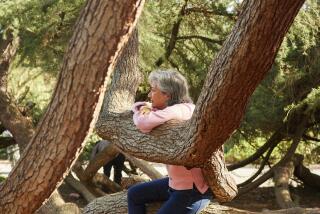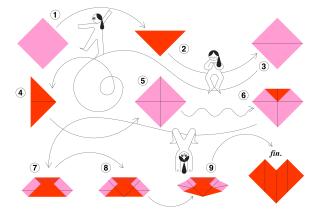‘Expressive Therapy’ Gets PhD Program
- Share via
CAMBRIDGE, Mass. — Surrounded by tissue paper, feathers and glitter, the students in Andrea DeSharone’s classroom could look like a kindergarten art class.
But they are working on their PhDs.
For future art, music and dance therapists, learning to express their feelings through art--creating an object or image out of these craft supplies--is the key to what they someday hope to practice.
This year, Lesley University began what it believes is a first-in-the-nation doctoral program in the field of “expressive therapies.” The program hopes to help fill the need for new practitioners as alternative forms of mental health treatment grow in popularity.
“People use the arts to feel better, plain and simple,” said Julia Byers, director of the program and a licensed art therapist. “When people are in crisis, or in trauma, the arts can be a better form of expression than words. Sometimes words can be very, very limiting.”
Overseas, the expressive therapies have been used for decades. In Argentina, most hospitals have at least one music therapist, and most hospitals in Israel are staffed with both an art and a drama therapist.
But in the United States, the so-called “alternative” types of medicine are just starting to catch on, said Eric Miller, director of Expressive Therapy Concepts, a nonprofit organization in Phoenixville, Pa.
“The area is spreading now because people aren’t satisfied with drug therapies anymore,” he said. “The arts give people an intuitive sense of power and control in their lives. Some just need help learning to harness it and seeing the good it can bring them.”
The Lesley doctoral program is an expansion of its existing expressive therapies program leading to a master’s degree. The PhD will take an average of four years to complete, Byers said.
Two students are enrolled this semester, five more are expected in January and 10 are expected to enroll next September, she said.
Byers said she believes the expansion will help boost the field’s credibility in the medical industry.
Since 1993 most insurance companies have covered at least some forms of expressive therapy in a few states, including Massachusetts, California and Pennsylvania, she said.
“Americans haven’t quite found a slot for it yet,” she said. “But we’re getting there.”
The concept is simple. People who have been exposed to violence or suffered a loss or a serious illness cannot always deal with their emotions verbally.
But for many, listening to certain types of music, dancing to a song, or painting a picture that makes sense only to them can be healing, said DeSharone, a licensed dance therapist and instructor.
“Sometimes people are just blown away by what they discover,” she said. “When you’re in talking therapy you can talk around something going on, but with movement or art, things just appear.”
To pass that on to her students, she has them experience it for themselves. There are no desks in her classroom, and the only supplies students need to bring are their journals and an open mind.
She started a recent class by having her students dance “to the rhythm inside themselves.” After they had each performed the impromptu steps, she instructed them to begin again and slowly integrate their dances.
By the end of the 30-minute exercise, the students were moving together to the beat of a tambourine, stomping their feet to the rhythm and swinging bright scarves like color guards. As if on cue, when the beat stopped, they all dropped to the floor.
Immediately after, with little discussion in between, they scrambled around the paper and art supplies to draw, color, paint and glue down their emotions.
The result was an intertwined work of art, complete with glitter swirls, a tissue paper rainbow and lace woven throughout the pictures.
Next the group wrote in the journals and then sat in a circle to discuss the whole experience.
The classes are draining but can be exhilarating, said Bin-shin So, a 26-year-old from Taiwan.
Trained as a dancer in Japan, she came to the United States to enroll in the Lesley program.
“When I perform onstage, I always feel better and free,” she said. “But so many people forget how important it is just to move. I want to help them.”
More to Read
Sign up for Essential California
The most important California stories and recommendations in your inbox every morning.
You may occasionally receive promotional content from the Los Angeles Times.













